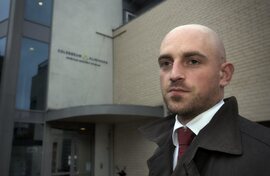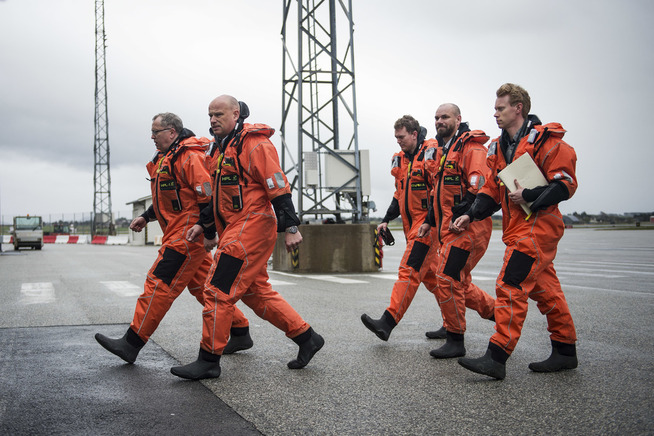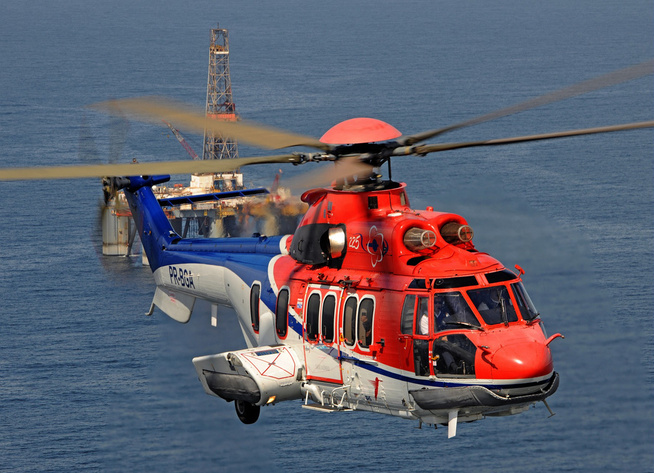Survivors after Turøyulykken want to know why the helicopter crashed. Lawyer Svein Kjetil Lode believes Statoil’s internal investigation shows that the oil company put too much of the responsibility for the safety of the helikopterselskapet.
– Statoil’s emergency response worked well. The survivors were well taken care of. But they are concerned about security and why this could happen. The report shows that Statoil supports itself on the professional competence of its subcontractor. It does not respond on how they’ve weighted security in relation to the economy at the choice of the transport company. They chose quality or price? The answer we miss, ” says the assistance of counsel.

REPRESENTS the BEREAVED: a Lawyer Svein Kjetil Svendsen
Photo: Alf Ove Hansen, VG
Eleven oil workers and two pilots perished in the helikopterstyrten.
It was Statoil’s vice president for konserngransking Gunnar Breivik, who published the major findings in the granskingskommisjonens report in the group’s head office at Forus in Stavanger now. A key finding is that the company must be better to see if savings have in the oil industry can affect the helikoptersikkerheten.
Here is Statoil’s report
Report turn speed that Statoil has high focus on helikoptersikkerhet. At the same time, it is pointed out that it is important to see the connections in an industry that is undergoing major changes with extensive cuts.
13 people died
It is the Accident investigation board Norway (Aibn) that is responsible for mapping the sequence of events and the cause of the accident itself. 13. may adopted Statoil in initiating a separate investigation after the accident. The purpose was to identify measures that can improve Statoil’s work with helikoptersikkerhet on the Norwegian continental shelf and the doctrine of the beredskapshåndteringen of the accident.
Read vg’s special about helikopterulykken here
the Super Puma helicopter from the French Airbus had 29.april picked up eleven oljerarbeidere on from the Statoil-operated oljeplattformen Gullfaks B in the north Sea and was on its way to Bergen airport, Flesland, as the rotor loose. The helicopter that had two pilots, crashed on Turøy in Øygarden outside of Bergen. All of the thirteen on board were killed.

HEAVY VISIT: Two days after the accident, visited the Statoil ceo Eldar Sætre and evp for the Norwegian continental shelf, ” Arne Sigve Nylund Gullfaks B platform together with Ole Jørgen Bratland, Øistein Johanessen and Per Arne Solend.
Photo: Carina Johansen
In the days after the accident, it was searched intensively for parts both on land and on the seabed. Many pieces of wreckage are sent to experts in France and England for further investigations. The aibn has so far concluded that the fatigue fracture in a part of the gear led to the crash.
According to flightradar24.com dived the helicopter 640 metres in the last ten seconds before it hit the ground. The aibn put forward several preliminary reports after the accident. 1. June gave an immediate safety recommendation to the european luftfartssikkerhetsbyrået (EASA) which led to the helicopter type was set on the ground around the world.
ROUTE: the Map shows, the Super Puma helicopter’s route from Bergen to the Gullfaks B platform and the rebound towards Flesland that ended in the crash in Øygarden outside of Bergen.
the Audit was concerned
28.april, the day before the Super Puma helicopter plunged, la director Anne Myhrvold of the Psa forward a report on the risk level in the Norwegian petroleum industry.
the Results are a varsku. They indicate that something may be about to happen with the level of security in the oil and gas sector, said Myhrvold.
media contact for Statoil’s operations and exploration activities on the Norwegian continental shelf, Morten Eek, rejected after the accident that nedskjæringene goes at the expense of safety.
– It is absolutely essential that effektiviseringsarbeidet not go beyond this. Anything else would violate everything we stand for as a company. Now it is up to the investigation to uncover the relevant factors of how the accident could happen, ” said Eek.
Violently sparepress
Ketil Karlsen of Industri Energy’s Brussels office, will lead a european group that will work to increase the sikkertsfokuset in an industry in transition.
– Helikoptertransporten is the largest risikoutfordringen for the offshore sector. In Norway we’ve come quite far and we the trade unions are satisfied with Statoil’s work. There is helikopterkompetansen high. The focus on security is not as good other places. In the united Kingdom are oil workers are extremely afraid to fly with a type of helicopter, it is the one that crashed at Turøy, Super Pumaen. says Knutsen.
He says the oil industry has minimized the risk of damage, most of the regions, apart from the transportetappen by helicopter.
Nanoparticles leads an international group who will work against the players in the oil industry.

the helicopter type: Super Puma H225 helicopter.
Photo: Airbus Helicopters
– It is not so easy when there is less money. There is intense pressure to save money and those who work with the helikoptersikkerhet are challenged every single day. Then it is not so easy to choose a safer, but more expensive solution. You are faced with the fact that the more affordable the solution is sure enough. It is it until it happens something wrong, ” says Knutsen.
Statoil has Now inspected himself. The lesson is, among other things, having an increased focus precisely on the level of security in innsparingstider.
how To explains Statoil even the eight vikigste the findings in relation to the helikoptersikkerhet:
* There is a need to strengthen the effort to see the relationship between factors (technical and commercial conditions) which, individually or collectively can affect the safety relating to helicopter transport. Based on this, it must be drawn up a clearer flysikkerhetsstrategi with its plan.
* the Organization of the helikoptersikkerhetsarbeidet in Statoil appear complicated with many actors and varying understanding of the individual’s role in the work. Even if it has not occurred that this so far has affected the quality of our work with helikoptersikkerhet, recommend the investigation team and a review of the organization of work with helikoptersikkerhet in Statoil in order to ensure the simplification and clearer rollebeskrivelser.
* Statoil should consider measures that facilitate better interaction and exchange of information between the helikopteroperatørene and manufacturers.
* Statoil should consider whether the flight safety work in even greater degree should emphasize an impact-control measures.
* New european regulations will bring a change in the balance of risks related to the helicopter services on the Norwegian continental shelf. At the same time, the industry faces changes that may challenge the focus on helikoptersikkerhet. Statoil must therefore clarify his own ambition to maintain and continuously improve the current standard for helikoptersikkerhet.
* For Statoil to be able to continue to have a leading role in helikoptersikkerhetsarbeidet must make sure to recruit new personnel, which in the long term can maintain competence and capacity in the department for flight safety.
VGTV: It adds Statoil fram the report.
No comments:
Post a Comment